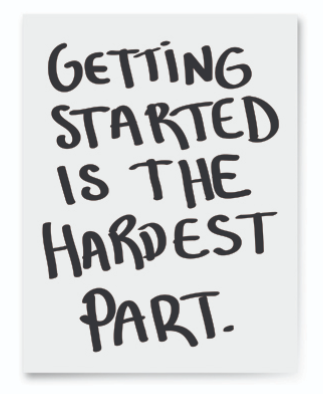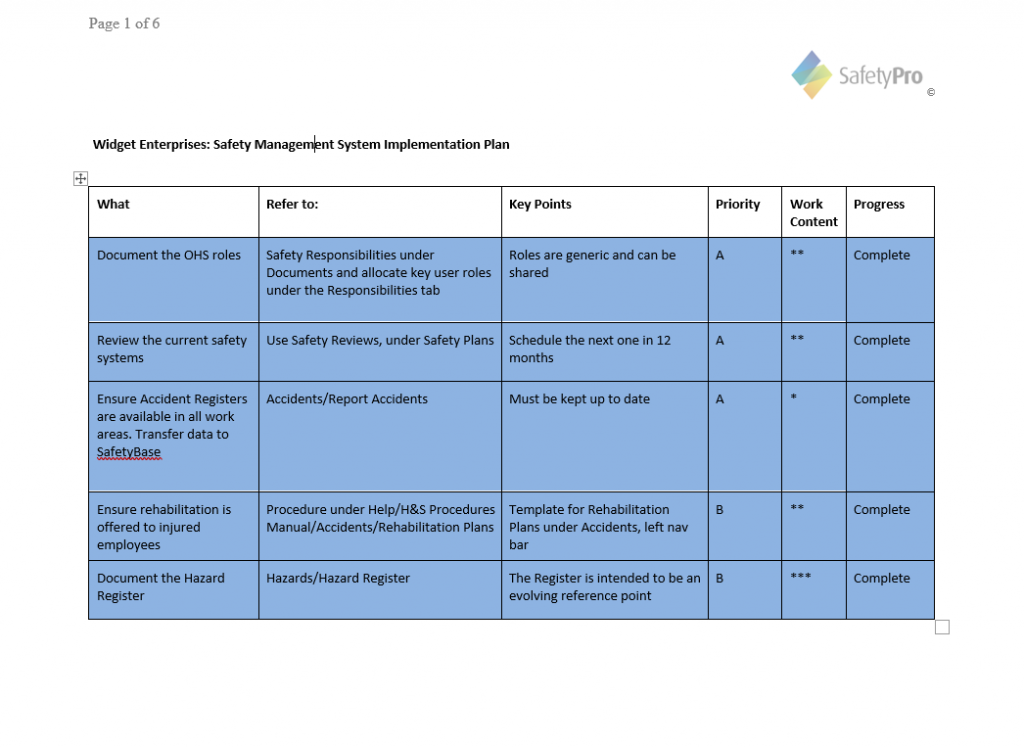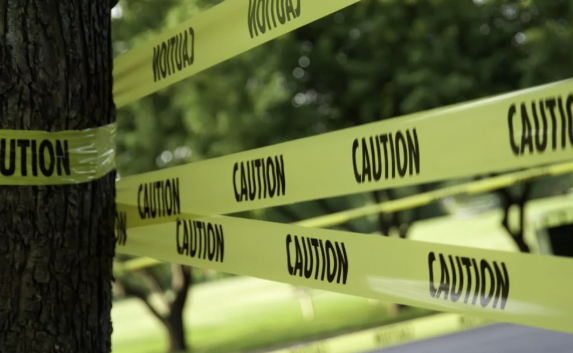Safety Advice
Safety Advice with Tangible Value

I’m Simon Lawrence, Director of SafetyPro Limited. What I offer you is more than 30 years experience in safety and risk management, 20 of those as a self-employed person. So I have seen and experienced a lot. Manufacturing, freight, forestry, retail, telecommunications, construction, food, engineering and everything in between. Similarly, you will get the benefit of 15 years as an ACC Auditor, where I had wide exposure to varied work environments. There are plenty of places you can get sketchy safety advice but experience is what counts. Because at the end of the day, the result will take less time, money and energy. It’s getting value for your time and money that matters.
If you are seeking a safety management system, safety advice, problem-solving, auditing of systems or training for your supervisors and managers, please get in touch. 0800 000 267 or E-mail me.
SafetyBase software, the site this page is hosted on, is my health and safety management application, which is a large part of the SafetyPro business. But consulting remains an important part of the service. Because I love meeting people in business and understanding what they actually need, then helping them to get over the line without stress. Health and safety can be frustrating for busy people.
Getting runs on the board
The four tabs on this page are exclusively about safety advice. Each tab describes the key services I offer. But you can mix and match. You may notice there is a common thread, which is about helping you resolve what may seem like impenetrable problems. And helping you to focus on doing simple things to run your health and safety system. This straightforward approach comes with experience. I prefer to act as a mentor, which means you remain in control. But if appropriate, I can directly contribute and “get hands-on”, just to help get some early runs on the board.
The last thing you need is someone like me doing remote management of your health and safety. Apart from anything else, it doesn’t work, except for planning, reviewing and on-call assistance. As a result, day to day leadership and communication with workers always belongs to you. And you only pay for what you agreed and what actually gets done. If someone claims they can manage your safety as an external service, treat that offer with extreme caution. Because no one can manage health and safety by filling out bits of paper. There has to be leadership on the spot.
So I stick to what gives you the most value: Authoritative, helpful safety advice. And I make sure you are left standing on your own two feet.
Simon Lawrence
0800 000 267

In at the Deep End
 It’s not much fun finding yourself under pressure with your safety, due to some new initiative or negative event. For instance, you’ve been cruising along, doing alright with safety for years because you know the basics. But suddenly, a nasty accident happens or you have to show compliance and the pressure’s on. Or maybe there was something that was already foreshadowed, like getting audited one day. And now, the chickens have come home to roost.
It’s not much fun finding yourself under pressure with your safety, due to some new initiative or negative event. For instance, you’ve been cruising along, doing alright with safety for years because you know the basics. But suddenly, a nasty accident happens or you have to show compliance and the pressure’s on. Or maybe there was something that was already foreshadowed, like getting audited one day. And now, the chickens have come home to roost.
You don’t have the time to spend on it, and even if you did, it’s going to take you 10 times longer than it should, because you’ll need to acquire a whole new layer of knowledge. But a bit of safety advice could be very helpful.
The four most frequent “crisis” issues people call me for are listed below. These are scenarios I have regularly encountered as a health and safety consultant. And they are all problems that can be resolved quickly, simply and efficiently.
However, there’s no magic wand. Because the process always requires smart actions and a bit of work. But it’s far less scary if you have someone who has been there before and who also has a plan that has worked before.
Here are the most frequent types of issue:
- A big client has once more requested you to send them your “Safety Plan”. Before contract renewal. That’s code for “This time we really mean it”. It’s the way things are done these days. But you need to know what game is being played. And you need to play it too. But you can do it with integrity.
- Head Office wants a safety audit and your “system” is full of holes. In fact, that big dusty manual has gone missing too. Not the end of the world. First of all, the thicker a manual is, the less practical use it is. Secondly, I will get you going with simple, effective stuff. In fact, you are probably already doing some useful things so we blend them in. Before you know it, you are ready for audit.
- Your safety person moved on and nobody really knew what they used to do. Then, someone found out that unfortunately, the safety person didn’t know what they were doing either. So they had been winging it for a few years. Time to get back to basics. Together, we straighten out the big things first, then the rest falls back into place.
- There’s a new manager who says you need to implement a Safety Management System. And you agree. Of course. Now what? Big dark tunnel. But we have headlights and a vehicle to get you to the other end. And the experience to remove obstacles.
The good news is, all of these situations are far simpler than they appear. And you are perfectly capable of doing the things you need to do. But you just need to know what those things are, in which order to do them, and to be able to navigate past the inevitable obstacles. For example, you have no idea how to assess (say) a chemical hazard and how to decide what control measures are needed; or safety meetings spend a whole hour talking about why things can’t be done. Because analysing is more fun than actually doing something; or perhaps one team member has become obsessed with a detail that happens to be in their own favourite domain.
It’s at times like these an experienced outsider can make a big difference.
So here’s a typical list of the sort of steps involved:
- I find out what YOU want as the end result. (This sounds obvious, but some consultants like to use stock solutions).
- We identify the obstacles and time-frames you have. Also, what you are currently doing/have not been doing.
- We identify a broad approach and timing that everybody can live with.
- Once that’s done, you will get a simple documented Implementation Plan that’s prioritised, with basic building blocks first and details last. Like building a house.

- We assemble a small internal Implementation Team that will meet at an agreed frequency to work through the Plan in bite-sized pieces. The Team will include me and my role is to help to keep the Team focused and solve problems as they arise. Although I don’t chair meetings, I’m not afraid to use a reset button if things bog down.
- I provide “hands-on” horsepower if appropriate. For example, if we are implementing a safety management system, it’s often useful for me to add my knowledge of hazard/risk management to get the Hazard/Risk Register developed. And if that means walking around and looking at stuff, I will do that, to get the momentum started.
- I provide unlimited email and telephone support for the duration of the project.
- Sometimes it’s a good idea to finish off with a quick confirmation check. For example, before the project goes “in front of the judges”, just to make sure all is hanging together.
If you would like a chat, call 0800 000 267
Safety Advice – Planning and Review
This is the stuff you do AFTER you have put your safety management system in place. Because it’s what avoids the manual getting dusty or the safety person wandering off-grid. Accounting systems are audited. And safety systems are no different.

So systems need to be kept fresh by a process of continuous review and improvement. Often, this means some form of audit will be undertaken periodically. And internal audits play a part. Because the internal auditor(s) already know their own organisation in depth. On the other hand, they may also be more likely to make exceptions or turn a blind eye.
External experts may lack local knowledge but are perhaps more likely to apply a fresh approach and provide creative safety advice. There is, however, a role for both internal and external audits.
Either way, the system itself needs life breathed into it. Because it has to be seen as a useful and reliable tool that has wide consent and support.
Having arrangements to access a reliable safety expert is therefore something to consider.
If you would like a chat, call 0800 000 267
Supervisors and Managers OHS Skills Courses
I strongly believe health and safety should be a result of “doing things right” – and therefore part of the general drive for quality – getting things right first time. However, like any system, health and safety has some unique processes to follow. So specific knowledge of these processes makes “doing it right” a lot easier.
For example:
- A supervisor ought to know what a Notifiable Event is because those events must be reported to Worksafe.
- At the general level, managers are more able to make safe decisions if they understand the meaning of risk and its relationship with what is “reasonably practicable” under the law.
- And knowing how to conduct an accident investigation that is insightful and effective is a skill that does not come naturally to many people.
Senior leaders want a safety system to work. So line managers and supervisors must understand how to support that. And senior leaders themselves must receive safety advice or they will get it wrong too.
My training courses are always a process of “opening windows of understanding”. And you don’t experience those sorts of “I get it” moments just from a PowerPoint show. There has to be something else as well. While I do use visual displays, we also have discussions and together we answer a lot of questions. Because key facts are understood better when there is active participation.
And you get answers to all your questions.
Here are my most popular training topics. All of them are half a day or less.
Understanding the Health and Safety at Work Act.
On the face of it, this has to be a dry subject, doesn’t it? But unless managers and key workers have a grasp of what the Act actually does require, the world will remain full of speculation, misunderstanding and myths. And there certainly are plenty of myths about health and safety. But how do we make this topic genuinely interesting? Believe it or not, we pluck up the courage and  work our way through a copy of the actual Act using a pre-prepared set of key questions. Yes, I know. But it works, because together, we find the answers to all those questions. So here are just four examples:
work our way through a copy of the actual Act using a pre-prepared set of key questions. Yes, I know. But it works, because together, we find the answers to all those questions. So here are just four examples:
- “A fork lift stops suddenly and a pallet, being carried 2 metres above floor level slides off. No one is hurt. Is this a Notifiable Incident?”
- “What is a valid reason for a worker to refuse to do a job for health and safety concerns?”
- “Can anyone agree a contract to exclude, limit or modify the operation of the Act?”
- “If I’m an employee health and safety rep, will I be prosecuted if there’s something unsafe?”
This is a half-day course for 2 to 20 people. Cost is either a flat fee of $750 plus GST or $200 plus GST per person, whichever is the lesser cost.
Hazard Management (And Taking a Risk).
This topic is central to an employer’s duties under the Act. Because work has hazards. Just day-to-day living has hazards. It’s not bad to live and work with hazards. For example, when you drive home after work, you are busy managing hazards by constantly assessing risks, taking preventive actions and hopefully following rules like stopping at red lights.
Workers do not have to be “wrapped in cotton wool”. In fact, an employer’s duty is to do what is reasonable for the risk. So understanding what is a reasonable risk is the core purpose of this training, and it’s what gives rise to my cheeky sub-heading “(And Taking a Risk).” In other words, we have to talk about risk and work with it.
This is a half-day course for 2 to 20 people. Cost is either a flat fee of $750 plus GST or $200 plus GST per person, whichever is the lesser cost.
Accident Reporting and Investigation
 Strangely enough, the current Act says nothing directly about internal recording of accidents, nor the need to investigate them. The previous Act was very clear about it. Never mind, we have to work with what we’ve been given.
Strangely enough, the current Act says nothing directly about internal recording of accidents, nor the need to investigate them. The previous Act was very clear about it. Never mind, we have to work with what we’ve been given.
This training course clarifies statutory requirements for reporting Notifiable Events and makes out the case for internal recording of other incidents. So having clarified accident reporting and recording, we examine accident investigation in detail. Because it’s an opportunity for improvement. However, for many people, it’s not a skill that comes naturally.
We kick off by finding out how good the group already is at investigating. Then we look at the three main reasons why we should investigate incidents, learn a simple investigative technique and finally, return to the first investigation to see if we improved. Which we always do.
This is a half-day course for 2 to 20 people. Cost is either a flat fee of $750 plus GST or $200 plus GST per person, whichever is the lesser cost.
Examples of other available training
- Contractor Management.
- Machine Guarding
- Conducting Safety Inspections
- Isolation of Machinery
- Preventing Manual Handling Injuries
- Preventing Gradual Process Disease
- Effective Safety Committees
- Understanding and Managing Stress
If you would like a chat, call 0800 000 267

